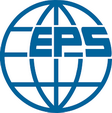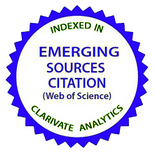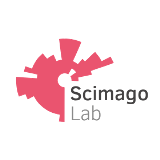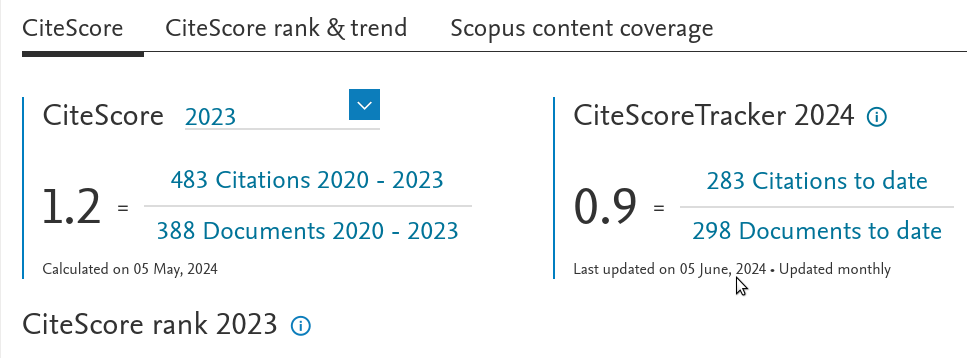Submissions
Submission Preparation Checklist
As part of the submission process, authors are required to check off their submission's compliance with all of the following items, and submissions may be returned to authors that do not adhere to these guidelines.- The submission has not been previously published and it is not under consideration for publication in another journal.
- The paper is written in accordance to the UJP Author's Guideline with the use of the UJP style file.
- The submission file is available in PDF format.
- The authors have selected at least three keywords that classify the topic of their paper in the best way.
- The authors can suggest at least three reviewers for their submission. The names and e-mails of the reviewers should be specified in the Comments for Editor field below.
- Making a new submission, the author must personally add all his collaborators to the appropriate metadata fields (their last names and initials, affiliations, and e-mail addresses).
Fields and elementary particles
Fields, elementary particles, gravity, physics of high energy, nuclear physics, nuclear reactions, astrophysics
Optics, atoms and molecules
Physics of atoms and molecules, optics, lasers, quantum optics, quantum information, photonics, nano- and biophotonics
General physics
Thermodynamics, statistical physics, kinetics, phase transitions, quantum mechanics, superconductivity, nonlinear dynamics
Plasma physics
Physics of plasma, gas and particle beams
Physics of liquids and liquid systems, biophysics and medical physics
Physics of liquids and liquid systems, biophysics and medical physics
Liquid crystals and polymers
Liquid crystals, polymers, amorphous matter
Semiconductors and dielectrics
Semiconductors and dielectrics
Physics of magnetic phenomena and physics of ferroics
Magnetic resonance, spin glasses and chains, ferro-glasses, spin-lattice models, Kondo effect, magnetism in disordered systems,
Magnetic semiconductors and spintronics, magnetotransport, Landau levels, quantum Hall effect,
Physical properties and phase transitions in the systems with long-range order (ferromagnetic, antiferromagnetic, ferroelectric, antiferroelectric and antiferrodistortive materials)
Order-disorder and topological phase transitions,
Surface and interface magnetism, ferroelectricity, ferroelasticity and multiferroicity
Surface physics
Surface physics, low-dimensional systems, nonlinear dynamics
Structure of materials
Structure of materials, methods of its diagnostics, spectroscopy, radiation physics
Chronicle
Chronicle, biography, persons
Special Issue
Only invited submissions will be considered.
Special Issue Dedicated to S.M. Ryabchenko's Anniversary
Only invited submissions will be considered.
12th Bolyai–Gauss–Lobachevsky (BGL) Conference
The Proceedings the 12th Bolyai–Gauss–Lobachevsky (BGL) Conference on Non-Euclidean Geometry in Modern Physics and Mathematics
P.M. Tomchuk’s Memorial Issue
P.M. Tomchuk’s Memorial Issue
Scope of the issue:
- theoretical studies of physical properties of metal nanoparticles and their ensembles;
- electron–lattice energy exchange and hot electrons in island metal films;
- semiconductor physics (kinetics, fluctuations, absorption, radiation);
- liquid crystals and colloids;
- physics of molecular structures with hydrogen bonds;
- chronicle (review papers dedicated to P.M. Tomchuk’s scientific legacy and works).
All the papers submitted to the memorial issue should contain references to the works of P.M. Tomchuk.
Copyright Notice
Copyright Agreement
License to Publish the Paper
Kyiv, Ukraine
The corresponding author and the co-authors (hereon referred to as the Author(s)) of the paper being submitted to the Ukrainian Journal of Physics (hereon referred to as the Paper) from one side and the Bogolyubov Institute for Theoretical Physics, National Academy of Sciences of Ukraine, represented by its Director (hereon referred to as the Publisher) from the other side have come to the following Agreement:
1. Subject of the Agreement.
The Author(s) grant(s) the Publisher the free non-exclusive right to use the Paper (of scientific, technical, or any other content) according to the terms and conditions defined by this Agreement.
2. The ways of using the Paper.
2.1. The Author(s) grant(s) the Publisher the right to use the Paper as follows.
2.1.1. To publish the Paper in the Ukrainian Journal of Physics (hereon referred to as the Journal) in original language and translated into English (the copy of the Paper approved by the Author(s) and the Publisher and accepted for publication is a constitutive part of this License Agreement).
2.1.2. To edit, adapt, and correct the Paper by approval of the Author(s).
2.1.3. To translate the Paper in the case when the Paper is written in a language different from that adopted in the Journal.
2.2. If the Author(s) has(ve) an intent to use the Paper in any other way, e.g., to publish the translated version of the Paper (except for the case defined by Section 2.1.3 of this Agreement), to post the full Paper or any its part on the web, to publish the Paper in any other editions, to include the Paper or any its part in other collections, anthologies, encyclopaedias, etc., the Author(s) should get a written permission from the Publisher.
3. License territory.
The Author(s) grant(s) the Publisher the right to use the Paper as regulated by sections 2.1.1–2.1.3 of this Agreement on the territory of Ukraine and to distribute the Paper as indispensable part of the Journal on the territory of Ukraine and other countries by means of subscription, sales, and free transfer to a third party.
4. Duration.
4.1. This Agreement is valid starting from the date of signature and acts for the entire period of the existence of the Journal.
5. Loyalty.
5.1. The Author(s) warrant(s) the Publisher that:
– he/she is the true author (co-author) of the Paper;
– copyright on the Paper was not transferred to any other party;
– the Paper has never been published before and will not be published in any other media before it is published by the Publisher (see also section 2.2);
– the Author(s) do(es) not violate any intellectual property right of other parties. If the Paper includes some materials of other parties, except for citations whose length is regulated by the scientific, informational, or critical character of the Paper, the use of such materials is in compliance with the regulations of the international law and the law of Ukraine.
6. Requisites and signatures of the Parties.
Publisher: Bogolyubov Institute for Theoretical Physics, National Academy of Sciences of Ukraine.
Address: Ukraine, Kyiv, Metrolohichna Str. 14-b.
Author: Electronic signature on behalf and with endorsement of all co-authors.
Privacy Statement
The names and email addresses entered in this journal site will be used exclusively for the stated purposes of this journal and will not be made available for any other purpose or to any other party.












